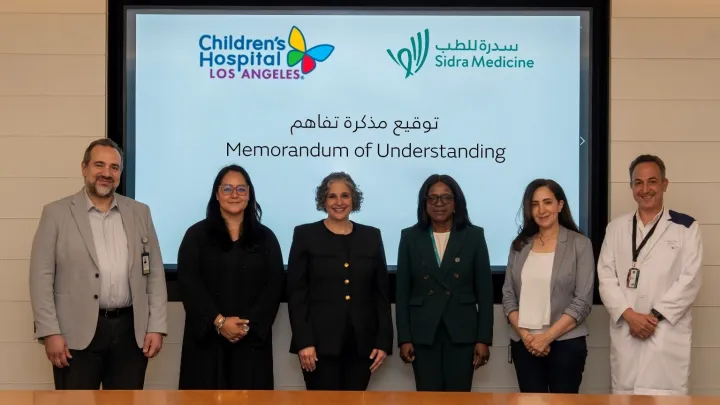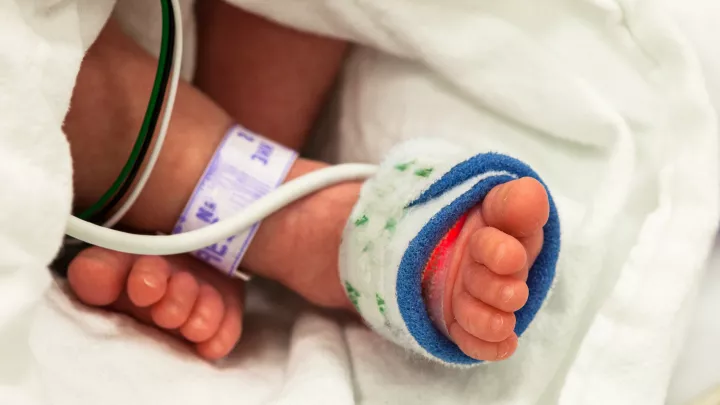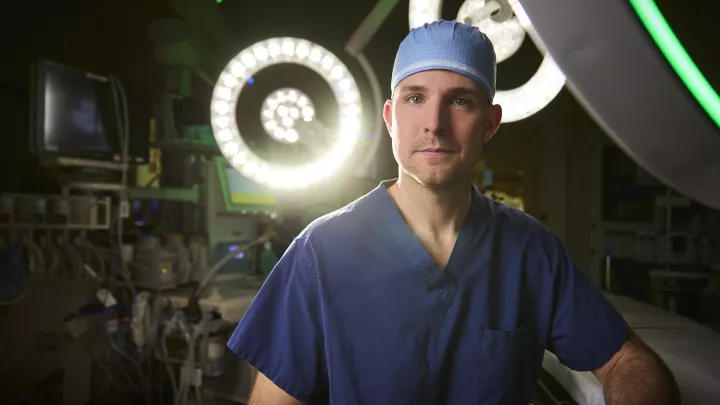Hypoplastic Left Heart Syndrome (HLHS) Clinical Trial
A groundbreaking clinical trial at the Heart Institute of Children's Hospital Los Angeles is using stem cells from umbilical cord blood in an attempt to strengthen the hearts of children born with a rare congenital heart defect known as hypoplastic left heart syndrome (HLHS).
In HLHS, the left ventricle is severely underdeveloped. About 1,000 children in the U.S. are born each year with the condition, which is fatal unless corrected by surgery. Children with HLHS have three surgeries over the first three years of life to re-route the heart's blood flow and make the right ventricle the main pumping chamber.
However, over time, doctors have discovered that as children with HLHS reach late adolescence, their reconstructed hearts are beginning to show signs of cardiopulmonary deterioration.
HLHS Consortium Advances Cell-Based Therapy
The HLHS Consortium, launched by the Mayo Clinic in Minnesota, seeks to enroll up to 20 children at chosen regional centers in a Phase I clinical trial. CHLA is the only West Coast member. The study will test the hypothesis that stem cells from a newborn's umbilical cord blood can stimulate new heart muscle to grow. The goal: to delay or even prevent heart failure in patients with HLHS.
“We have gotten so good at surgically caring for these patients. Now our goal is to find the next transformative therapy for the treatment of patients with HLHS. ”
– Ram Kumar Subramanyan, MD, PhD
The healthy human heart is a muscle with two hard-working pumps. The right ventricle normally pumps oxygen-poor blood from the heart to the lungs. The left side receives oxygenated blood from the lungs, then sends it out to the entire body. When the left side is underdeveloped, as in HLHS, that blood flow is impaired. With surgery, the right ventricle takes on the duty of pumping oxygenated blood to the entire body.
In a healthy heart, the left ventricle is thick with muscle while the right ventricle has less, making it less equipped to pump blood throughout the body. By injecting stem cells into the right ventricle of a baby with HLHS, scientists hope to find out if muscle in this area can be increased, making it better able to perform the ‘double duty’ required.
"As a center with outstanding surgical outcomes for HLHS, we want to be in the forefront of novel approaches for this complex disease," says Vaughn Starnes, MD, co-director of the Heart Institute at CHLA and chair, Department of Surgery, Keck School of Medicine of the University of Southern California (USC).
Leading the study at CHLA is cardiothoracic surgeon Ram Kumar Subramanyan, MD, PhD. "We have gotten so good at surgically caring for these patients," he says, "now our goal is to find the next transformative therapy for the treatment of patients with HLHS.”
HLHS Surgery: Step-by-Step
- Within a few hours of birth: The newborn arrives at CHLA's Thomas and Dorothy Leavey Cardiothoracic Intensive Care Unit.
- 2-5 days after birth: The baby undergoes the first palliative HLHS surgery.
- Within 6 months of birth:The second scheduled surgery, the bidirectional Glenn procedure, takes place. This is when the baby's own stem cells are thawed and injected into the heart muscle.
- By about 3 years old:The child has the third surgery, the Fontan procedure, to complete the new journey of blood flow through the heart.
Meet Amy and Jasmine
Jasmine Garcia is one of the first participants in the study at CHLA. When she was born with HLHS in December 2017, investigators collected her umbilical cord blood, from which they will derive what they hope are heart-strengthening stem cells. "I believe this is a second chance for our daughter and her future," says Jasmine's mom.


